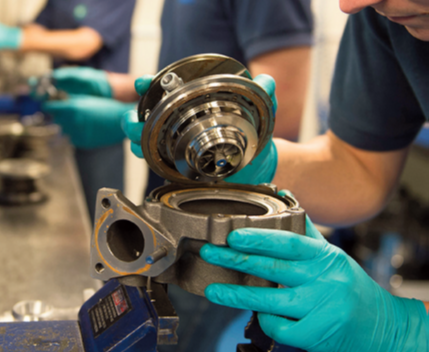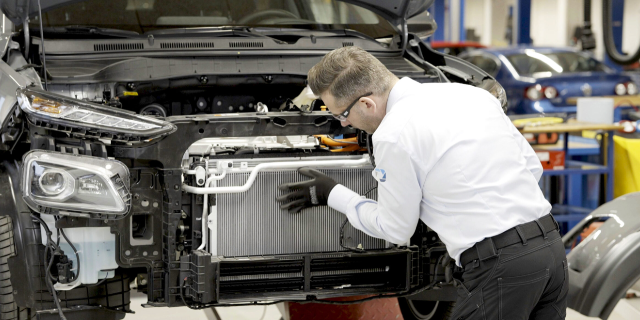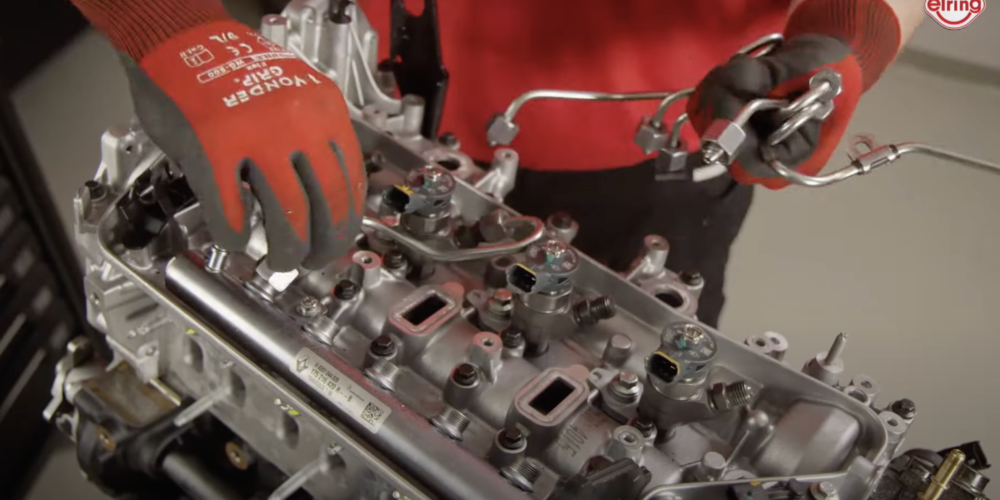What are the first signs of damaged turbocharger?
Turbocharger contrary to popular opinion is a very durable device. Despite the harsh conditions in which it operates, high temperatures and operating speeds, it is one of the most durable parts that is able to function for a long time. Similar as the engine, the turbocharger needs care and precautions during its operation in order to keep its service life as long as possible.
Failure-free operation of a turbocharger largely depends on understanding the environment in which it works. Therefore, if we want to avoid unpleasant surprises, we should follow few basic actions such us:
- avoiding high revs just after starting the engine,
- leaving the engine running for a while after driving to cool down the turbocharger,
- replacing the oil at regular schedule.

One of the first symptoms of turbocharger’s damage that we are able to notice is a drop in the engine’s power. You can sense that the car doesn’t accelerate as quickly as it used to (characterized by the turbo not giving a boost between about 1000-1500 rpm) or doesn’t reach top speed as quickly as it should. This may be caused e.g., by the damaged turbocharger’s rotating parts or leaks between the turbocharger and the intake manifold. In addition to the “Check Engine” light, a drop in power is often accompanied by disturbing noises and vibrations coming from under the hood.
All turbochargers generate some level of noise that most of the drivers don’t even notice. However, if this sound gets louder or it begin to be more noticeable, or changes in any way, it can be a symptom of many different problems, such as:
- compression wheel damage by foreign material,
- imbalance of the turbocharger’s rotating system,
- intercooler malfunction or leaks in the exhaust or intake system,
- exhaust gases passing through the gasket of turbocharger’s exhaust manifold.
Another defect of the turbocharger that can be easily noticed is an increased amount of the smoke coming from the exhaust system. Based on the colour of the escaping gas, the type of fault can be predetermined Both blue and black smoke can indicate turbine malfunction or failure.
- Black exhaust gases mean too rich fuel mixture, which in case of a damaged turbocharger may mean that due to its failure or leakage in the intake system too little air is supplied to the combustion chamber and the fuel is not burned completely. Other causes of the black smoke are damaged or worn injectors or damage to the Exhaust Gas Recirculation (EGR) system.
- The blue-coloured exhaust gas means that the engine oil is burning, which in the case of a damaged turbocharger means that the rotating system on the compression side has been unsealed, and the oil has entered the combustion chamber through the intercooler. Another cause of blue smoke can be oil leaking through worn or damaged valve seals.
Another symptom that may indicate turbo damage is a noticeable excessive loss of engine oil. The most frequent symptoms of turbocharger’s failure connected with significant oil loss are: traces of oil in the inlet and/or exhaust system pipes proving excessive wear of sealing rings, which is additionally manifested by excessive smoke from the exhaust pipe. Oil enters the intake and/or exhaust system through damaged seals. In extreme cases, when the leakage from the compression side is very large and a significant amount of oil enters the cylinders through the intercooler, uncontrolled combustion and engine runaway can occur.
When is it known that a turbocharger cannot be repaired?
Nowadays with constantly increasing number of turbocharged engines the number of spare parts for turbochargers and availability of technology necessary to repair them is also growing. Although the makers of the “originals” still insist that turbochargers with e.g., variable geometry shouldn’t be repaired but replaced with a new unit, the number of workshops offering this service is still growing. Among other things, this is due to the much easier availability of spare parts and the gradual emergence of specialist variable-geometry alignment machines in garages. After all, the customer is the king and always gets what he wants.
Source: company Melett – manufacturer of turbocharger repair parts.













